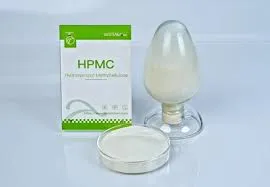
Dec . 04, 2024 18:27 Back to list
hydroxypropyl methyl cellulose hpmc
Hydroxypropyl Methylcellulose (HPMC) An Overview of Its Properties and Applications
Hydroxypropyl methylcellulose (HPMC) is a versatile cellulose derivative that has garnered significant attention in various fields, ranging from pharmaceuticals to construction. As a non-ionic polymer, HPMC is known for its thickening, binding, film-forming, and emulsifying properties, which make it an essential ingredient in many formulations.
Chemical Structure and Properties
HPMC is produced by the chemical modification of cellulose, which is derived from natural sources such as wood pulp. The substitution of hydroxyl groups in cellulose with hydroxypropyl and methoxy groups gives HPMC its unique properties. The degree of substitution and the molecular weight of HPMC can be adjusted during manufacturing, allowing for a range of products that vary in viscosity and solubility.
One of the defining characteristics of HPMC is its ability to form a gel in the presence of water. This property is largely attributed to its hydrophilic nature, which allows it to absorb water and swell in a solution. The viscosity of HPMC solutions can range widely, depending on the concentration and molecular weight. This variability enables it to be used in applications requiring different levels of thickness; for example, low-viscosity grades are often used in liquid formulations, while high-viscosity grades are suitable for paste formulations.
Applications in Pharmaceuticals
In the pharmaceutical industry, HPMC plays a crucial role in formulating various drug delivery systems. Its film-forming ability makes it valuable in the production of sustained-release tablets and capsules. By controlling the rate at which the drug is released, HPMC can improve therapeutic efficacy and reduce side effects, offering a patient-friendly way of medication administration.
Additionally, HPMC is commonly used as a binder in tablet formulations, helping to ensure that the active pharmaceutical ingredients are evenly distributed and effectively compressed. Furthermore, its mucoadhesive properties enhance the bioavailability of certain drugs by improving adhesion to mucosal tissues, thereby allowing for a longer duration of action.
The versatility of HPMC extends beyond solid dosage forms; it is also utilized in many topical formulations. Its ability to form a protective film on the skin makes it an ideal choice for gels, creams, and ointments. Moreover, HPMC is often included in ophthalmic solutions due to its ability to provide lubrication and enhance the comfort of eye drops.
hydroxypropyl methyl cellulose hpmc

Construction and Building Materials
Beyond the pharmaceutical realm, HPMC is increasingly becoming a staple in the construction industry. It is used as a polymer additive in cement-based materials, such as mortars and tile adhesives. In this context, HPMC enhances workability, water retention, and adhesion of the mixtures, ultimately leading to improved strength and longevity of the final products.
The ability of HPMC to retain water is particularly valuable in construction applications, as it reduces the risk of cracking and shrinkage in drying cement. Additionally, the thickening properties of HPMC allow for better control of viscosity, making it easier to apply materials to various surfaces without significantly altering the performance characteristics.
Food and Cosmetic Uses
HPMC is also gaining prominence in the food and cosmetic industries. As a food additive, it serves as a thickener, stabilizer, and emulsifier. It can be found in sauces, dressings, and bakery products, enhancing texture and consistency without compromising flavor.
In cosmetics, HPMC is employed in a variety of products, from shampoos to lotions, where it acts as a thickening agent and helps to improve the overall feel and application of products on the skin.
Conclusion
Hydroxypropyl methylcellulose is a multifaceted compound with a wide range of applications across various industries. Its unique properties—such as thickening, binding, and emulsifying—allow it to serve critical roles in pharmaceuticals, construction, food, and cosmetics. As research continues to explore its potential, HPMC is expected to find even more innovative uses in the future, underscoring its importance in modern science and industry. The adaptability and beneficial characteristics of HPMC highlight its significance as a valuable tool in formulating products that meet the demands of diverse applications.
-
Versatile Hpmc Uses in Different Industries
NewsJun.19,2025
-
Redispersible Powder's Role in Enhancing Durability of Construction Products
NewsJun.19,2025
-
Hydroxyethyl Cellulose Applications Driving Green Industrial Processes
NewsJun.19,2025
-
Exploring Different Redispersible Polymer Powder
NewsJun.19,2025
-
Choosing the Right Mortar Bonding Agent
NewsJun.19,2025
-
Applications and Significance of China Hpmc in Modern Industries
NewsJun.19,2025







